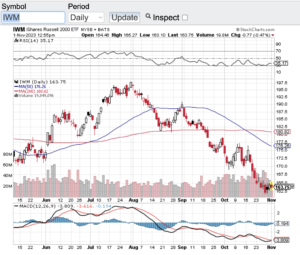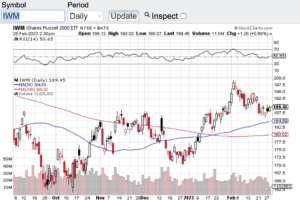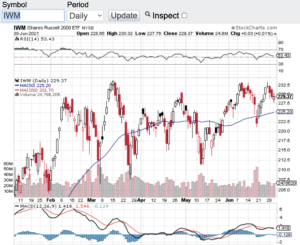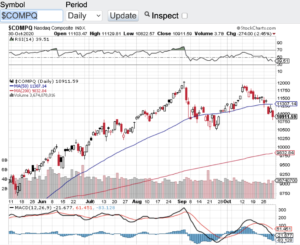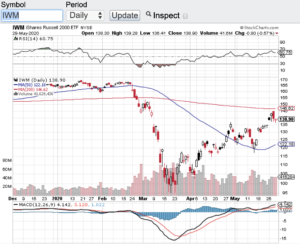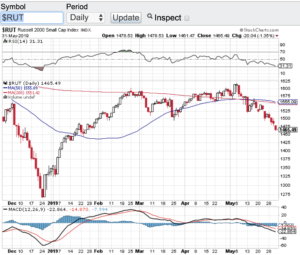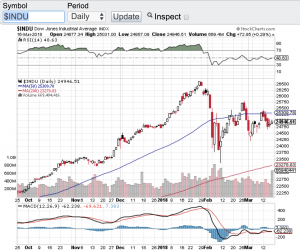After the major averages breached their 200-day moving averages, the question now becomes, “is the bounce that is currently underway real? Last month I wrote about how the 200-day moving averages were in play. Meaning we could see either a bounce off of the 200-day or a breach of it with markets heading lower. Despite trying to bounce off of their 200-day, ultimately in the second half of October the Dow Jones Industrial Average (see chart here), the S&P 500 (see chart here), the Nasdaq Composite (see chart here) and the small-cap Russell 2000 (see chart here and below) began their decent and breached this key technical support line.
Now the question becomes “can the rally we are seeing this week continue?” Well if you look at the latest GDP report and how our economy grew in the 3rd quarter, it would be easy to assume the markets will continue rallying. The U.S. Gross Domestic Product aka the GDP is a monetary measure of the market value of all final goods and services is a specific time period. In this case it was the 3rd quarter of this year. The U.S. economy grew faster than expected in Q3 coming in at 4.9%. This increase was due in part to consumer spending, increased inventories as manufacturers gear up for the upcoming holiday season and government investments. As mentioned above, it is easy to assume that the markets will continue rallying, however, there is a catch.
With our economy showing this type of strength, this will most likely grab the attention of the Federal Reserve as it pertains to their current interest rate policy. It’s no secret that the Fed has been raising interest rates to stem inflation. Well, when you have such a strong GDP report such as the one that was just issued, this could impact the Fed’s decision with continuing to raise rates, or at the very least maintain the current interest rate dynamic. Markets tend to want to see interest rate stability before any sustainable rally ensues. That being said, the recent interest rate hikes may be enough to weather the stronger than expected economy we saw in Q3.
Good luck to all 🙂
~George
